Hot topics: 10 intriguing questions for the 2016 season
It may seem an age since the chequered flag dropped in Abu Dhabi to end the 2015 season, but fear not - in just a few weeks’ time the teams and drivers will be back in action at the first pre-season test of the year. To whet your appetite, we’ve compiled a list of 10 of the most intriguing storylines heading into the new F1 campaign…
1. Can Ferrari challenge Mercedes’ dominance?

After obliterating the opposition in 2014, Mercedes were statistically even more dominant in 2015, but if you think that makes them super confident for 2016, think again. Sure, the world champions fancy their chances, but they’re also expecting an extremely tough challenge from the team that emerged as their biggest rivals last season - Ferrari.
Galvanised by the arrival of four-time world champion Sebastian Vettel and charismatic new team principal Maurizio Arrivabene, the Scuderia beat Mercedes fair and square on three occasions last year, and with their power unit getting ever closer to Brixworth’s world beater and the first fully-realised car from highly regarded technical director James Allison waiting in the wings, the Prancing Horse is once again the most likely candidate to halt the seemingly unstoppable Silver Arrows juggernaut.
The question is, will Ferrari be able to go that one step further? They’ve established themselves as the chief thorn in Mercedes' side, but as Williams found out before them, that, in a sense is the easy bit - taking the fight to - and beating - Lewis Hamilton and Nico Rosberg race in, race out is a much tougher ask.
It sounds obvious, but the key to that will be Ferrari improving their one-lap pace - an area in which they lagged significantly behind their rivals last term. If they can do that without damaging their traditionally strong race pace, expect Vettel and team mate Kimi Raikkonen - who is overdue a big season - to take full advantage.
2. Can Rosberg ride his 2015 momentum and upstage Hamilton?

The minute Lewis Hamilton wrapped up victory and the championship in Austin - and nonchalantly tossed the second-place cap at his team mate in the drivers’ room - something changed. Whether it was in Hamilton, in Nico Rosberg, or a bit of both, no one is quite sure. What is certain is from that point onwards the formbook was reversed. Rosberg continued his run of poles unabated - P1 on the grid for each of the final six races - and defeated his nemesis in all of the season’s three remaining Grands Prix.
Rosberg’s rise was such that some sections of the media were even questioning whether the wrong man had won the title, emphasising how different things might have been had the German found that form from the get-go. Much was also made of Rosberg now carrying that momentum into 2016, implying that he already has Hamilton on the back foot for next season.
But, of course, it is not that simple. Some would argue Hamilton simply took his foot off the gas, subconsciously at least. It’s no secret that he’s got plenty of interests outside of F1 racing - and he was clearly enjoying these in the latter part of the year. Others suggested that changes made to Mercedes’ set-up direction after their ‘poor’ showing in Singapore did not suit the Briton’s driving style. Either way, the fact of the matter is that 2016 is to all intents and purposes a blank canvas with a new car - one into which both drivers will have significant development input.
If Rosberg really wants to have his team mate rattled heading into March’s season-opener in Australia, his late-2015 form alone will not be enough. He will also need to dominate the winter testing programme and show Mercedes - and Hamilton - that he is just as strong a candidate - if not stronger - for the 2016 title as the three-time world champion on the other side of the garage.
3. Will Red Bull’s fortunes improve - or will there be further discontent?

After a rather public falling out, messy (and ultimately fruitless) negotiations with other teams, and then plenty of toing, froing and scratching of heads, Red Bull eventually agreed to continue using Renault power units in 2016, albeit with the engines now branded ‘TAG Heuer’ after the team’s new timing partner.
But given Renault’s struggles last year in both the reliability and horsepower stakes, does that mean another year of frustration for Dietrich Mateschitz’s former champions? The answer to that lies in how much progress Renault are able to make over the winter. Depending on who you listened to, the French manufacturer’s unit was reckoned to be around 50 bhp down on Mercedes’ all-conquering power plant at the end of 2015, and the Silver Arrows won’t have been standing still.
However, there are signs that things are beginning to look up: Renault’s decision to return to the sport as a fully-fledged constructor (see below) has added much-needed impetus, while the decision to work ever more closely with engine guru Mario Illien’s Ilmor firm will bring a wealth of additional expertise. But will it be enough to propel Red Bull, widely regarded as one of F1 racing’s premier chassis builders, back to the top of the rostrum after a year away?
4. Will the Renault works team hit the ground running?

After what seemed like an interminably long period of ‘will they/won’t they’, Renault finally committed in December to returning to F1 racing with a full works entry in 2016, taking over not Toro Rosso (as was strongly hinted at in the summer) but Lotus - the team they previously operated from 2002 to 2009, winning four world championship titles.
But having finally made their mind up, the question now is what can we expect from La Regie in year one of their return? Looking at the facts, the brutal truth is that 2016 could well be a tough transitional season for French manufacturer.
Despite a litany of off-track issues in 2015, the Enstone squad were able to capture a respectable sixth in the constructors’ standings. But crucially, in the coming year they won’t be able to call on the two factors that were arguably the key reasons for that success - Romain Grosjean and Mercedes power.
The departure of the former (who, amid uncertainty over the team’s future, jumped ship to the fledgling Haas squad, to be replaced by British rookie Jolyon Palmer) leaves Pastor Maldonado as Renault’s de facto team leader, and though the Venezuelan’s speed has never been in doubt, his questionable ability to bring the car home has raised more than a few eyebrows.
But it’s the loss of Mercedes engines that, while completely unavoidable, presents the bigger headache, and not just because of a decrease in horsepower, but because of the inevitable compromises caused by a change of power unit so late in the design process.
Will those compromises cause delays or, worse still, underlying performance issues? Can Maldonado and his rookie team mate provide the direction the squad needs to progress? We’ll find out soon enough…
5. Can McLaren Honda move up the grid?

To say the rekindled McLaren-Honda partnership fell wildly short of expectations in 2015 would be to utter one of the world’s biggest understatements. From the very first moment of testing it was clear that the former world championship-winning duo were in trouble, and despite repeated promises of significant improvements to the performance and reliability of the Japanese manufacturer’s hybrid power unit, things had only improved marginally by the season’s end.
The big question now is can McLaren and Honda deliver the 2.5s worth of performance gains over the short winter break that Fernando Alonso says they need to transform themselves from fringe top-10 finishers to race winners?
The answer to that appears to lie in Honda’s ability to improve the hybrid aspects of its much maligned power unit, and in particular the recovery and deployment of energy from the MGU-H. If it can do that, then McLaren could make the kind of remarkable revival that Alonso and his similarly frustrated team mate Jenson Button so desire, particularly as the consensus was that from a chassis perspective the MP4-30 was none too shabby.
Indeed, Alonso was able to set the third-fastest lap of the race at the season finale in Abu Dhabi when the team switched his car’s settings to ‘full deployment’ over the final five laps in order to help ascertain its ultimate performance potential.
Whether he’ll get as close to the only two men who were quicker than him, old adversaries Lewis Hamilton and Sebastian Vettel, in 2016 remains to be seen, but as Button has pointed out, you need only look at Ferrari’s incredible turnaround from 2014 to 2015 - when they went from just two podium finishes in the inaugural season of the current regulations to three wins and 16 podiums in the second - to see the kind of transformation that is possible when everything clicks…
6. Can Verstappen and 2015’s other rapid rookies kick on another level?

It’s rare for a rookie driver to make an instant impact in his debut season, but Max Verstappen did exactly that in 2015. Such was the fanfare surrounding his aggressive racing and daring overtakes that his fellow newcomers were frequently overshadowed, despite some excellent performances of their own.
Verstappen’s team mate Carlos Sainz kept the flying Dutchman honest throughout the year, and also beat him to Toro Rosso’s best qualifying position of the season. Meanwhile at Sauber Felipe Nasr comprehensively out-scored more experienced partner Marcus Ericsson.
The question now is who can build on that strong first campaign and step things up a gear in 2016? Will Verstappen go from strength to strength, or has he peaked sooner than the others and find himself being suddenly matched or surpassed by them?
Both Toro Rosso’s and Sauber’s driver line-ups remain unchanged and that consistency will benefit all of those at the wheel. It will also allow fans to make a true judgement call on whose star is still rising, and whose trajectory is beginning to flat-line.
It’s going to be a fascinating contest…
7. Will increased tyre freedom lead to more exciting races?

One of the most interesting rule changes for 2016 is the introduction of increased freedom for teams with regard to the tyres they use at each race.
For the first time, Pirelli will make three, rather than two, dry-weather compounds available at each event, with the teams free to choose 10 of the 13 sets at each driver’s disposal. That in of itself should open up plenty of strategy options, not least because the teams now have the option not just of running different rubber to their rivals, but also different compounds amongst their own drivers.
But there’s a further wrinkle too. Because of the logistics involved in provided a wider variety of rubber and then shipping them around the world, the teams have to submit their choices for each round well in advance - no less than eight weeks before the start of each European round and 14 weeks before the start of races elsewhere. That meant that selections for the first two rounds of the season had to be made before the turn of the year, long before any 2016 car had turned a wheel in anger.
Essentially that means that the teams, with little knowledge of how the 2016-spec tyres will behave, will have had to gamble on which compounds to select - and as with any gamble there always comes the risk that you might get it wrong…
8. Will the new Baku City Circuit prove as quick as it looks?
When track architect Hermann Tilke revealed details of the brand-new street circuit in Baku, one thing stood out immediately: this wasn’t going to be a tight and twisty ‘Monaco of the east’ - it was going to be fast.
How fast? Well, Tilke estimates that the top speed around the 6 km seaside-skirting Azerbaijani track will be approximately 340 km/h (or to put it another way, a whopping 211 mph). Whether that holds true in reality will depend on many factors, including the weather and the track surface, but to put those speeds into perspective, the fastest drivers through the speed traps in Monaco and Singapore - F1 racing’s other bona fide street venues - clocked 294 km/h (182 mph) and 310 km/h (192 mph) respectively...
“Obviously street circuits present a number of challenges, in terms of circuit design,” says Tilke, “but we have been able to incorporate some unique features that will provide the teams and fans with fascinating racing. For example, there will be an extremely narrow uphill section at the old town wall that will reward pinpoint accuracy and courage, and we have an acceleration section of almost 2.2 kilometres along the promenade which will see the cars running flat out at very high top speeds - something that will create an incredible spectacle for the race fans on track and the viewers at home.”
We can only hope…
9. Can Haas establish themselves as a force to be reckoned with in year one?
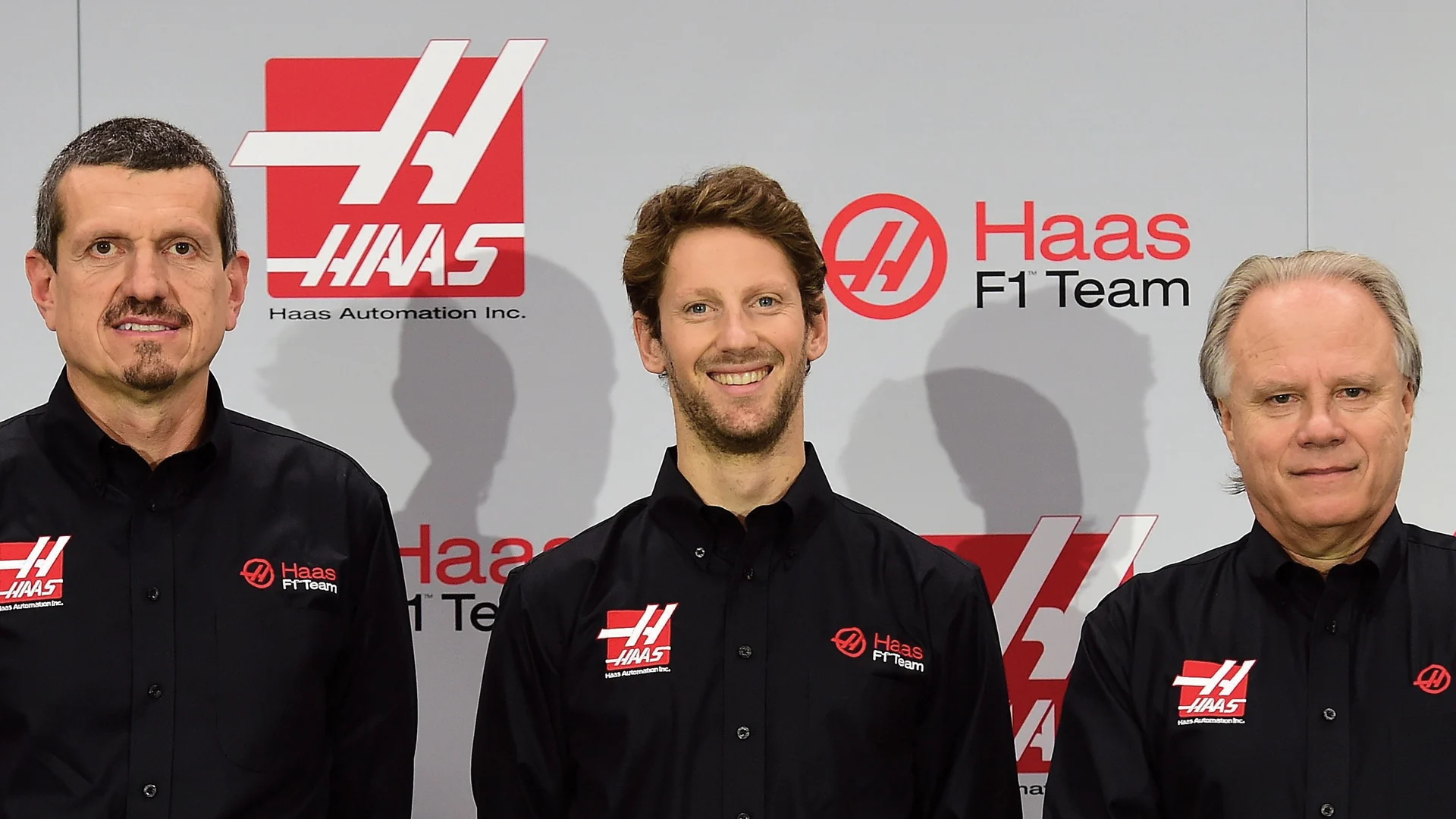
Breaking into Formula One racing is a tough business. Of the three new teams that joined the grid in 2010, only Marussia remain - and they have scored points at just one race to date. US entrepreneur Gene Haas, who has made his money in machine tools and NASCAR racing, insists his team - the first American-led F1 effort in three decades - will be different.
Cynics instantly questioned Haas’s plan to operate out of his Kannapolis NASCAR campus in North Carolina, but the team have subsequently acquired UK headquarters in the shape of Marussia’s former Banbury factory. More importantly, they have signed a multi-year technical agreement with Ferrari - one which Gene Haas believes will take a lot of the pain out of starting a new F1 squad from scratch.
The team’s serious intent is also evident in their driver line-up. There are no wedged-up rookies here. Instead we have ten-time podium finisher Romain Grosjean - a man whose F1 career is still very much in its ascendancy - paired with former Sauber racer and Ferrari tester Esteban Gutierrez. Between them they boast over 120 Grand Prix starts.
There is experience behind the scenes too. Team principal is former Red Bull and Jaguar F1 technical chief Guenther Steiner, ex-Marussia members Dave O’Neill and Rob Taylor are team manager and chief designer respectively, while chief aerodynamicist is former Ferrari man Ben Agathangelou.
So on paper at least, Haas already look to be a highly credible concern. Their first job will be to match and beat 2015 backmarkers Marussia - who have the added benefit of Mercedes power for 2016. Beyond that who knows? What is certain is that Haas are under no illusions regarding the size of the task ahead of them.
10. How will the latest ‘second-generation’ F1 rookie fare?

Last season it was Max Verstappen, son of Jos. This year it’s Jolyon Palmer, son of Jonathan. Verstappen will be a hard act to follow - in the space of 10 Grand Prix starts the Dutch teenager had eclipsed the 17 points his father scored in his entire 106-race F1 career. Palmer’s equivalent target is not unrealistic either, though - 14 points (which Dad claimed from 82 starts).
It’s there, however, that the similarities of their debuts end. Whereas Verstappen landed on the grid aged just 17, with only a season of single-seater racing behind him, Palmer has far more experience to call on. Having won the GP2 Series title in 2014, the British driver - who will be 25 when he starts his first Grand Prix - spent last season as Lotus reserve, putting in some convincing performances over 13 Friday practice appearances.
Exactly how competitive his 2016 machinery will be remains to be seen - the car’s gestation has not been an easy one thanks to uncertainty over its engine supply and the late confirmation of the switch back to Renault power - as will how Palmer stacks up against enigmatic team mate Pastor Maldonado.
Next Up
Related Articles
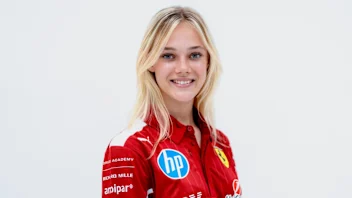 F1 AcademyFerrari sign Larsen for 2026 F1 ACADEMY campaign
F1 AcademyFerrari sign Larsen for 2026 F1 ACADEMY campaign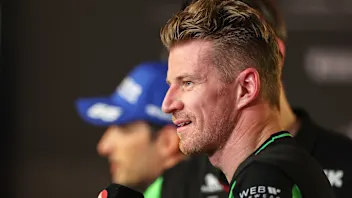 Hulkenberg pleased to score points in Sauber’s final race
Hulkenberg pleased to score points in Sauber’s final race Norris collects World Championship trophy at FIA Awards
Norris collects World Championship trophy at FIA Awards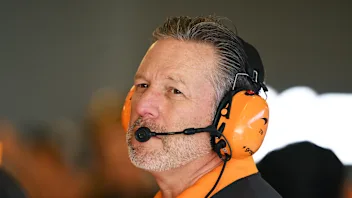 Brown insists McLaren ‘won’t change the way we race’
Brown insists McLaren ‘won’t change the way we race’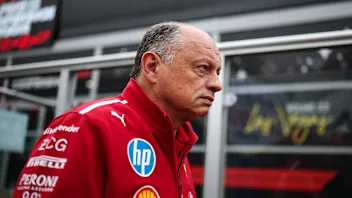 Vasseur says he misjudged impact of switching focus to 2026
Vasseur says he misjudged impact of switching focus to 2026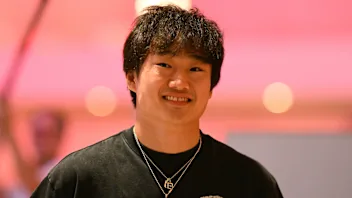 Tsunoda's best moments in F1 as he departs the grid
Tsunoda's best moments in F1 as he departs the grid